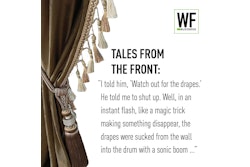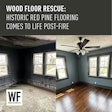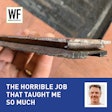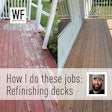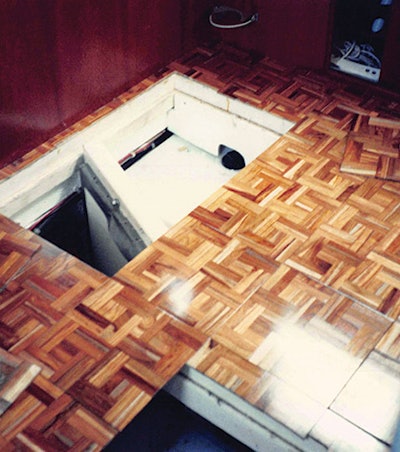
When we are kids, we believe we are unbreakable … until we find we aren't. Through our adolescent, teen and young adult lives, we do things and take chances that, frankly, scare the hell out of us when we get older. Some resent being told to wear seat belts or motorcycle helmets. When something bad happens and a seat-belt-less person is ejected from a car, or a motorcyclist's head is smashed where a helmet would have been, well, it happens to "other people." Those are the evening news stories. I'm sure we all know people who quit smoking when their doctor gave them the news that they were going to die if they didn't. There is a big bold label on each pack of cigarettes warning of the dangers of smoking, but people still put that bullet in the chamber and spin the cylinder.
In our trade, there are warning labels on much of what we use to do our jobs, although some of the labels are not so bold. All of the National Wood Flooring Association education classes and seminars stress reading labels before using a product, but how many of us actually do? I have spread enough wood flooring adhesive containing chlorinated solvents to float an aircraft carrier. I have walked out of many a job with a raging headache or too dizzy to drive. I read the spread rate, noted the trowel recommendation and open time, but I never bothered to read the fine print about what was in the product or how it may affect me physically. Only when these products were banned did I look into why they made me feel sick.
I have spent a lot of time lately considering what else I have exposed myself to over my decades in the wood flooring business. I got the sobering news a few weeks ago that I have cancer. During the discussions with the oncologist, a lot of questions were asked as to what, if any, chemicals I have been exposed to plying my trade. The list is all too common: chlorinated solvents, xylene, mineral spirits, methyl benzene, naphtha, aziridines, isocyanides, formaldehyde and various species of wood dust.
Sitting in a chair every morning getting IVs and lying on a table every afternoon getting radiation therapy gives you a lot of time to think about how easy it would have been to always wear a full-face respirator and cover my skin when using conversion varnish. I knew it would kill my clients' goldfish and indoor plants; I should have thought more about what it was doing to me!
The list goes on. Moisture cured urethane—just open some windows and move fast? Not a good idea. Oil-modified urethane—now I think of the headaches as the tip of the iceberg. Two-component water-based finishes have to be handled with care. Read the labels! Wear gloves when handling the additives, use proper ventilation or wear a respirator that is approved for this type of application. Wear gloves when applying stain, because you can absorb the solvents through your skin, not to mention eyes and lungs!
Read labels and get informed so you can protect yourself! There is a very good reason that the EPA is cracking down on VOC limits. Just the name should raise red flags for the end users: Volatile Organic Compounds. Google these words; it will make you think. Yet people try to circumvent the system by buying quarts of higher VOC product because they aren't allowed to buy gallons. Some manufacturers are even packaging quart packets in 5-gallon pails.
Just the name should raise red flags for the end users: Volatile Organic Compounds. Google these words; it will make you think.
Consider this: It isn't just us floor finishers and installers who are impacted by these chemicals, it is the environment, your customer, their neighbor! Would you go back to using paint with lead additive because it flows better knowing what we know now about the effects of lead on ourselves, animals and plants? There are now many options in coatings and adhesives that make our jobs both easier and safer.
The reality is that it is up to each and every one of us to take the personal responsibility to be safer at work and home every day. Take the extra few minutes to put on a full-face respirator with the proper fresh charcoal filters; you will get used to wearing it. Wear long pants and long-sleeve shirts when coating with finishes that may be absorbed through your skin (it tells you on the label). Invest in high-quality disposable gloves that won't break after the first pass applying stain or working with additives and solvents. Get a good, comfortable pair of kneepads—wood splinters can carry serious bacteria. Wash with soap and water if you do get additives or solvents on your skin. Remember that wood dust is also a health hazard, and don't get your dust masks at the discount store. Read up on the proper mask for the work you are doing. Keep the MSDS sheets for all of the products you are using with you. Take it from me: Knowing what is in the products you are using could save your life.















